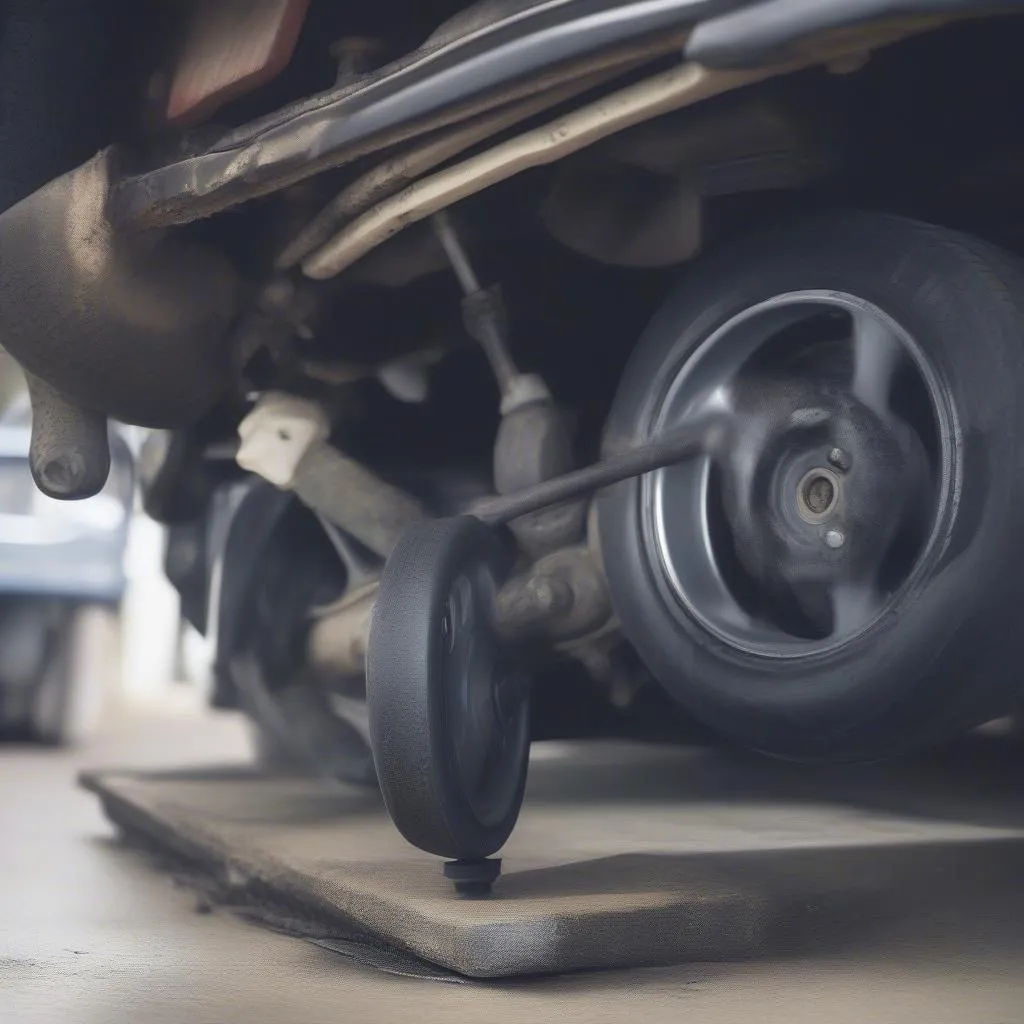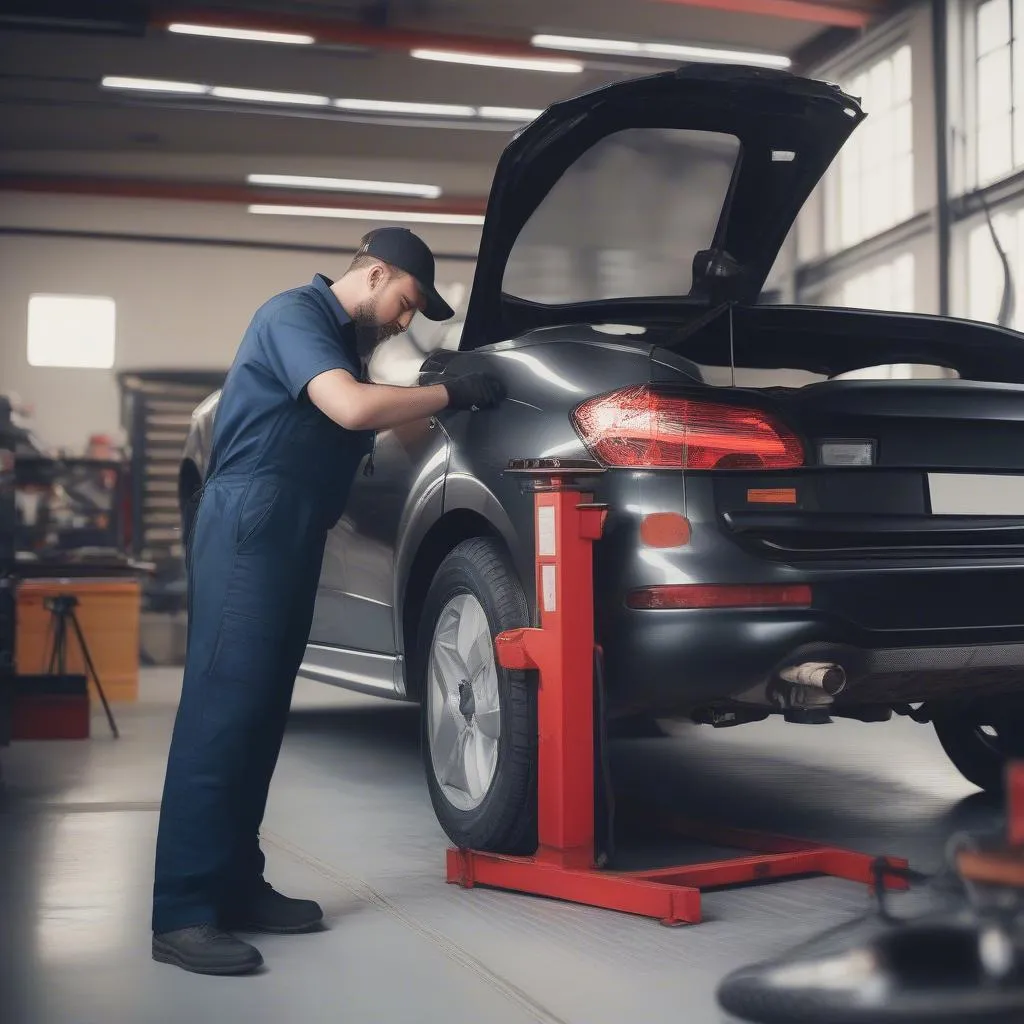Imagine this: you’re cruising down the Pacific Coast Highway, the California sun warming your face, and then… bounce! Your car hits a bump, and the bouncing doesn’t stop. Not exactly the smooth ride you were hoping for, right?
A car bouncing up and down while driving is not just an annoyance; it’s a sign that something might be off with your vehicle. As a seasoned mechanic specializing in European car diagnostics, I’ve encountered this issue countless times. Let’s delve into the reasons behind this bouncy behavior and get you back to enjoying those scenic drives.
What Does a Bouncy Car Mean?
A car that bounces excessively signals a problem with its suspension system – the network of shocks, struts, springs, and linkages that connect your wheels to your car. Think of it as the buffer between your car and the road, absorbing shocks and ensuring a smooth ride.
From a mechanic’s perspective, a bouncy car often points to worn-out shocks or struts. These components wear down over time, losing their ability to dampen the car’s movements. This is akin to a worn-out mattress failing to provide adequate support, leaving you tossing and turning through the night.
Identifying the Culprit: Why is My Car Bouncing?
Several factors can cause your car to resemble a low-rider on a hydraulic system, and here are the most common culprits:
1. Worn Shocks or Struts
As mentioned earlier, worn shocks or struts are the usual suspects. Over time, the fluid within them degrades, compromising their ability to control your car’s movements. If you notice your car bouncing excessively after hitting a bump or dipping forward during braking, worn shocks or struts are likely the cause.
“A good rule of thumb is to have your shocks and struts inspected every 50,000 miles,” advises Robert Davies, a renowned automotive engineer specializing in suspension systems. “Regular maintenance can prevent costly repairs down the line.”
2. Damaged Springs
While less common, damaged springs can also contribute to a bouncy ride. Springs work in tandem with shocks and struts, absorbing shocks and maintaining ride height. A broken or weakened spring can disrupt this delicate balance, leading to excessive bouncing.
3. Tire Issues
Believe it or not, your tires play a crucial role in your car’s ride quality. Underinflated tires, for example, can exacerbate bouncing as they lose their ability to absorb shocks effectively. It’s always a good idea to check your tire pressure regularly and maintain it according to your car manufacturer’s recommendations.
4. Loose or Worn Suspension Components
The suspension system comprises numerous components, and wear and tear in any of these can trigger a bouncy ride. Loose or worn control arms, bushings, ball joints, or sway bar links can disrupt your car’s suspension geometry, leading to an uncomfortable and potentially unsafe driving experience.
 Car Suspension System
Car Suspension System
Getting Back on Track: Addressing a Bouncy Car
Now that you have a better understanding of why your car might be bouncing, let’s discuss how to fix the issue:
1. Visit a Trusted Mechanic
The first step is to schedule an appointment with a trusted mechanic specializing in your car’s make and model. They have the expertise and specialized diagnostic tools to pinpoint the root cause of the problem. For instance, a dealer scanner for European cars like a BMW or Audi can provide in-depth insights into the car’s suspension system, aiding in accurate diagnosis and repair.
2. Consider a Professional Inspection
Consider a pre-purchase inspection if you’re experiencing bouncing issues with a used car you’re about to buy. This comprehensive inspection can reveal any underlying suspension problems and provide valuable insights into the car’s overall condition.
FAQs about Car Bouncing
Here are some frequently asked questions about car bouncing:
Q: Can I drive my car with a bouncing problem?
A: While driving with a slightly bouncy suspension might seem harmless, it can compromise your car’s handling and stability, especially at higher speeds or on uneven roads. It’s best to address the issue promptly to ensure your safety and prevent further damage to your vehicle.
Q: How much does it cost to fix a bouncy car?
A: The cost of repair depends on the underlying cause and the extent of the damage. Replacing worn shocks or struts can cost anywhere from a few hundred dollars to over a thousand, depending on your car’s make and model.
Q: Can I fix a bouncy car myself?
A: While some car maintenance tasks can be done at home, fixing a bouncy suspension requires specialized tools and expertise. It’s best to leave it to the professionals to ensure a safe and effective repair.
Beyond the Bounce: More Car Care Tips
Looking for more ways to keep your car running smoothly? Check out these articles:
Keep Your Ride Smooth and Safe
Remember, a car that bounces up and down excessively is a cry for attention. Ignoring it can lead to costly repairs and compromise your safety on the road. If you’re experiencing this issue, don’t hesitate to reach out to our team of expert mechanics. We’re available 24/7 to answer your questions and provide top-notch car repair and maintenance services.
 Car Repair and Maintenance
Car Repair and Maintenance
Contact us via Whatsapp at +84767531508 for assistance with your car’s suspension system or any other automotive concerns. We’re here to help you get back on the road and enjoy a safe and comfortable driving experience!